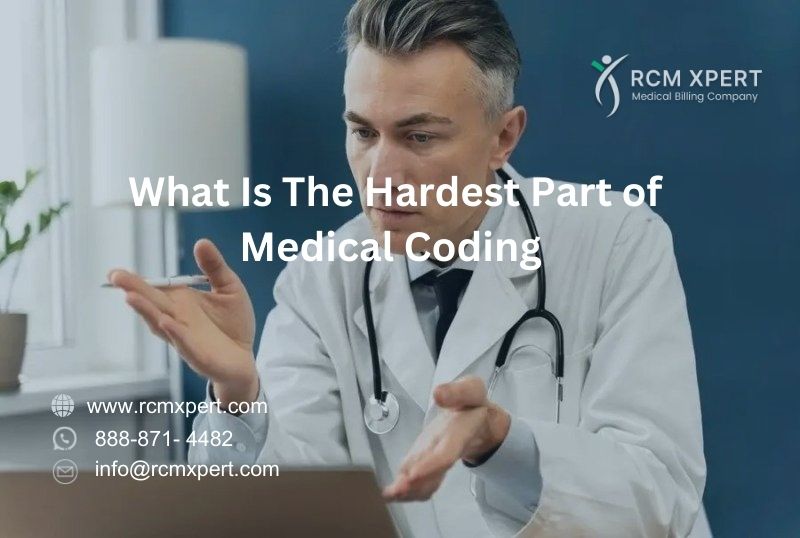Let’s face it: medical coding isn’t a walk in the park. It’s more like a hike through a dense forest with a map that’s constantly changing. As someone who’s been in the trenches of healthcare administration, I’ve seen firsthand how medical coders can get tangled up in the intricate web of codes, guidelines, and regulations. So, what exactly makes medical coding so challenging? Buckle up, because we’re about to dive deep into the nitty-gritty of this crucial yet complex field.
The Ever-Changing Landscape of Medical Codes
Picture this: You’ve just gotten comfortable with the current set of codes, and BAM! A new update drops. Welcome to the world of medical coding, where the only constant is change.
Why Code Sets Keep Evolving
Medical science doesn’t stand still, and neither do the codes used to describe it. New treatments, procedures, and diagnoses emerge all the time, necessitating updates to coding systems like ICD-10, CPT, and HCPCS. It’s like trying to hit a moving target while standing on a moving platform.
The Challenge of Staying Up-to-Date
Keeping up with these changes is no small feat. It requires:
- Constant education and training
- Regular review of coding updates
- Adapting to new guidelines and regulations
And let’s not forget the pressure of applying these updates correctly from day one. No wonder many coders feel like they’re perpetually studying for an exam!
The Anatomy of Specificity: When Details Make or Break the Code
If you thought remembering your spouse’s birthday was tough, try recalling the exact code for a “subsequent encounter for closed fracture of lateral malleolus of right fibula with routine healing.” Yeah, it’s a mouthful.
The Devil’s in the Details
Medical coding requires an almost superhuman level of attention to detail. One wrong digit, and you could be coding for a completely different procedure or diagnosis. It’s like playing a high-stakes game of “Spot the Difference” with potentially serious consequences.
Navigating the Specificity Maze
The challenge lies in:
- Understanding medical terminology inside and out
- Interpreting physician notes accurately
- Choosing the most specific code possible
- Avoiding the temptation to use unspecified codes as a shortcut
It’s a balancing act between being precise and being practical, and it’s not always easy to find that sweet spot.
The Crossroads of Clinical Knowledge and Coding Expertise
Here’s where things get really interesting. To be a great medical coder, you need to be part clinician, part detective, and part coding expert. It’s like being asked to translate a foreign language you’re still learning, into another foreign language you’re also still learning.
Bridging the Knowledge Gap
The hardest part? You need to understand:
- Anatomy and physiology
- Medical procedures and treatments
- Disease processes and pathology
- Coding guidelines and regulations
And then you need to seamlessly connect all these dots to assign the right codes. It’s no wonder that many coders feel like they’re constantly juggling multiple skill sets.
The Compliance Conundrum: Walking the Regulatory Tightrope
If medical coding were an Olympic sport, compliance would be the balance beam – narrow, unforgiving, and with a lot of eyes watching your every move.
The High Stakes of Compliance
Getting coding wrong isn’t just about lost revenue. It can lead to:
- Audits and investigations
- Hefty fines and penalties
- Damage to professional reputation
- In extreme cases, legal consequences
It’s enough to make even the most seasoned coder break out in a cold sweat.
Navigating the Regulatory Maze
The challenge lies in:
- Understanding complex federal and state regulations
- Keeping up with changing compliance requirements
- Balancing compliance with efficiency and productivity
- Documenting everything meticulously
It’s like trying to solve a Rubik’s cube while someone keeps changing the colors. Tricky, to say the least.
The Time Crunch: When Accuracy Meets Productivity Demands
In an ideal world, medical coders would have all the time they need to carefully consider each case. But in reality, time is often in short supply.
The Pressure Cooker of Productivity
Many coders face:
- High daily coding quotas
- Quick turnaround times for billing
- Pressure to reduce claim denials and improve cash flow
It’s like being asked to paint a detailed miniature… while riding a roller coaster.
Balancing Speed and Accuracy
The real challenge is maintaining a high level of accuracy while meeting productivity goals. It’s a delicate balance that even the most experienced coders struggle with at times.
The Technology Tango: When Systems Don’t Play Nice
In theory, technology should make a coder’s life easier. In practice… well, let’s just say it’s complicated.
The Challenge of Integration
Many coders face issues like:
- Working with multiple software systems that don’t communicate well
- Adapting to new Electronic Health Record (EHR) systems
- Dealing with system glitches and downtime
- Navigating clunky user interfaces
It’s like trying to conduct an orchestra where each musician is playing from a different sheet of music.
The Learning Curve of New Tech
Just when you’ve mastered one system, a new one comes along. The constant need to adapt to new technologies can be exhausting, even for the most tech-savvy coders.
The Communication Conundrum: Bridging the Gap Between Clinicians and Coders
If medical coding were a game of telephone, the players would be speaking different languages. And yet, clear communication is crucial for accurate coding.
The Challenge of Interpretation
Coders often struggle with:
- Deciphering illegible handwriting (yes, it’s still a thing!)
- Interpreting vague or incomplete physician notes
- Following up on missing information without annoying busy clinicians
- Explaining coding requirements to healthcare providers who may not understand their importance
It’s like being a translator, diplomat, and educator all rolled into one.
The Importance of Building Relationships
Successful coding often depends on building good relationships with healthcare providers. But this takes time, patience, and excellent interpersonal skills – not always easy in a busy healthcare environment.
The Emotional Toll: When Numbers Represent Real People
Here’s something that often gets overlooked: medical coding isn’t just about numbers and codes. It’s about real people with real health issues.
The Human Element
Coders often face:
- The stress of knowing their work impacts patient care and billing
- Dealing with sensitive or distressing medical information
- The pressure of knowing their work could be scrutinized in legal proceedings
- Balancing empathy with the need for objectivity
It’s a constant reminder that behind every code is a patient’s story.
Maintaining Professional Distance
The challenge lies in staying objective and accurate while not becoming emotionally overwhelmed. It’s a delicate balance that many coders struggle with, especially when dealing with particularly difficult or sad cases.
Wrapping Up: The Multifaceted Challenge of Medical Coding
So, what’s the hardest part of medical coding? The truth is, there’s no single answer. Medical coding is a complex field that requires a unique blend of skills, knowledge, and personal qualities.
From staying up-to-date with ever-changing codes to navigating compliance regulations, from balancing speed and accuracy to bridging communication gaps, medical coders face a multitude of challenges every day.
But here’s the thing: it’s these very challenges that make medical coding such a crucial and rewarding field. Coders play a vital role in the healthcare system, ensuring accurate records, proper reimbursement, and ultimately, better patient care.
So the next time you see a string of seemingly random numbers and letters on a medical form, remember: behind those codes is a skilled professional, navigating one of the most complex and important jobs in healthcare. And that, my friends, is no small feat.














